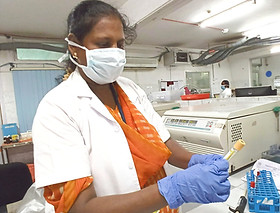BLOOD
INVESTIGATIONS
Standard blood investigations include
-
blood counts (hemoglobin, platelet counts and white cell counts)
-
Renal function tests
-
fasting and post-meal blood sugars
-
three-month average blood sugar test
-
blood cholesterol (Lipid Profile)
-
uric acid level test

URINE
TESTS
Your urine sample will be tested for protein and blood which, if found, may indicate that your kidneys need to be examined more closely. Urine tests include urine microscopy, Delta ALA, and urine metanephrines. Urine microscopy gives us an idea of whether there is any urinary infection. Urine delta ALA and meta-reference help us to find the reason for high blood pressure. High blood pressure can stretch the heart muscle and cause abnormal currents leading to palpitations.

ELECTROCARDIOGRAM
(ECG)
It can detect irregularities in your heart rhythm and diagnose many heart conditions. Electrodes are placed on your chest and 4 limbs. We have over 12 ECG machines centrally linked to the server. This helps us to access your ECG almost instantly from anywhere in the hospital. However, a standard ECG can record an abnormal heart rhythm only if it happens during the test. We may recommend a Holter test if you have palpitations that are absent a the time of the doctor seeing you but occurs daily.
_edited.jpg)
AMBULATORY BLOOD PRESSURE RECORDER
This test measures your blood pressure recordings for 24 hours. A blood pressure measuring cuff is wrapped around your arm and a device that records the blood pressure is put on a collar around your neck. You are encouraged to maintain your usual routine as far as possible. The blood pressure readings are then made available to the doctor at the end of the 24 hour period.

CHEST
XRAY
Chest Xray can be used to produce an image of the organs and structures in the chest. The chest X-rays provide an insight as to whether the heart is enlarged because of some disease. We can also see the image of implanted cardiac devices like pacemakers and assess their position. The X-ray gives us insights as to whether the leads are in the correct position. In patients with breathing difficulty, it helps rule out lung problems.

